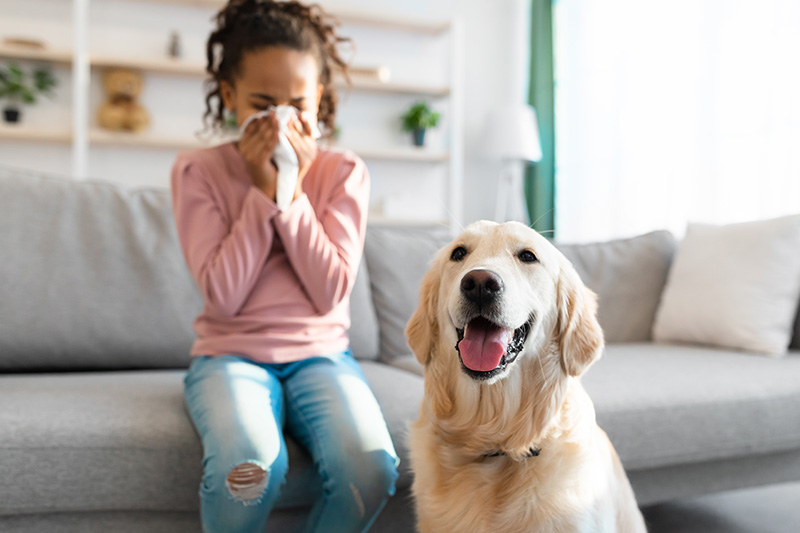Pollen and Indoor Air Quality: What You Need To Know
March 4th, 2022 by cverdone

As temperatures increase and seasons change, it’s more common to find pollen in the air. While this can be good news for bees and flowering plants, it’s not such a good thing if you have seasonal allergies. Pollen and allergens can also affect your indoor air quality and cause some symptoms. Keep reading to learn more about pollen and indoor air quality.
How Does Pollen Get into Your Home?
Pollen is one of the most common allergy-triggering substances, referred to as allergens. It can get into your home if it’s carried on clothing, through open windows or doors, or through your HVAC system. Even your four-legged friends could bring pollen inside, as could anyone else.
How Does Pollen Affect Allergies?
A tiny pinch of pollen contains thousands of tiny grains. It’s easy to see how it can affect anyone with allergies. Along with dust mites and pet dander, pollen is a common allergen. This is especially true if you live near grassy or landscaped areas. If you’re one of the 50 million people with allergies in the US, you know how bad allergens like pollen can be. Common symptoms association with this allergen include:
- Sneezing and coughing
- Red, watery, or itchy eyes
- Swelling or puffiness around the eyes
- Nasal congestion
- Fatigue
What Can You Do to Reduce Indoor Pollen Exposure?
If you have seasonal allergies, you need some precautions to reduce pollen exposure. Keeping up with home cleaning is one way to reduce allergens and allergy issues. Other steps you can take to reduce indoor exposure to pollen include:
- Washing linens and clothing in hot water (when possible to do so)
- Removing any items that might contain allergens
- Closing windows and doors on days when pollen counts are high
- Vacuuming a few times a week with a HEPA filter
How Can Controlling Indoor Air Quality Make a Difference?
It’s important to be mindful of the quality of the air inside your home if you have allergies. Poor circulation in your home can spread allergens around and worsen allergy symptoms. Be sure to maintain and clean your heating and cooling system as well.
What about Air Purification/Filtration Devices?
Reducing humidity is one way to reduce issues with allergens in your home or office. A functioning air conditioning system is a device of sorts that can help you achieve this goal. In fact, an air conditioner cools your home by keeping humidity levels low and removing warm air. There is not a lot of research on the effectiveness of air purification devices. But, there are some options you may wish to consider. The main ones include:
- Standalone air cleaners. If you use a standalone device in a room be sure you use a HEPA (high efficiency particulate air) filter. These filters remove 99 percent of common allergens.
- Electronic air cleaners. These devices use negative ion generators to change the nature of airborne particles. This way, they cling to charged plates or surfaces in your home.
- Hybrid filters. With these filters, you get a combination of filtration processes in one purifier.
- Ozone generators. These cleaners create gas molecules known as ozone with an electrical charge. Ozone generators aren’t recommended for people with asthma or lung-related conditions.
Call Us Today
An HVAC professional from Thornton Heating can help with indoor air quality issues. We start by inspecting your home’s HVAC system. This is a quick, easy, and affordable way to see if there are any issues that expose you to pollen and other allergens. Our HVAC professionals can recommend indoor air quality improvement solutions for your home.
Contact us today! Speak with an HVAC professional about your HVAC or indoor air quality concerns.

